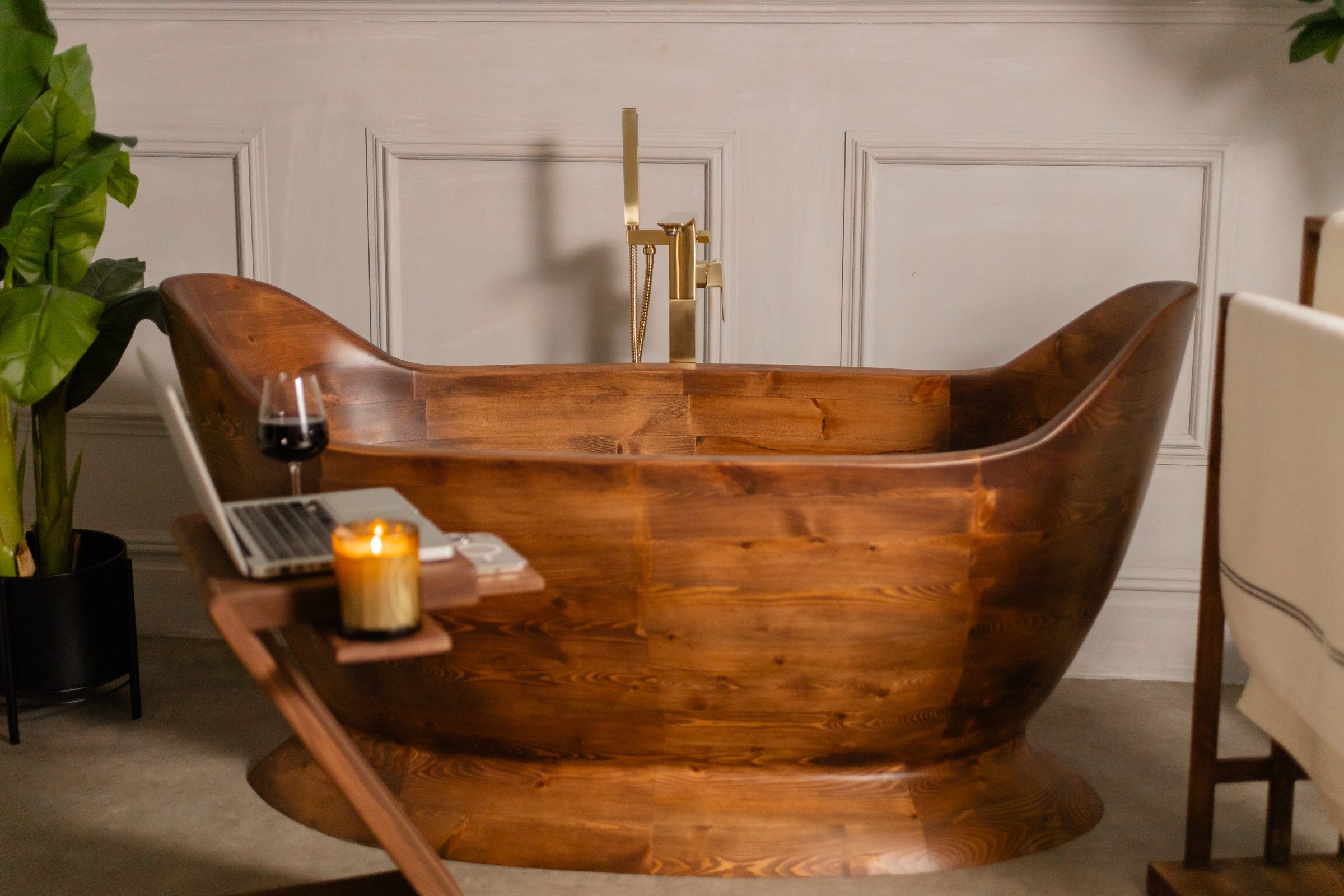Table of Contents
Introduction
Luxury bathrooms are evolving, embracing nature-inspired aesthetics and eco-friendly materials. Among the emerging trends, wooden bathtubs are taking center stage, offering a unique combination of elegance, warmth, and sustainability. Once seen as a niche choice, they are now becoming a must-have for homeowners and designers seeking to create a spa-like sanctuary at home.
The Rise of Wooden Bathtubs
For years, homeowners favored porcelain, acrylic, and stone tubs for their durability and classic appeal. However, with a growing emphasis on natural materials and biophilic design, wooden bathtubs are making a major comeback. Their handcrafted artistry and organic beauty make them stand out as both functional and decorative elements.
What Makes Wooden Bathtubs So Special?
1. Aesthetic Elegance
Wooden bathtubs add a touch of sophistication and warmth that other materials cannot replicate. The natural grain patterns, rich textures, and artisanal craftsmanship create a stunning focal point in any bathroom, making them perfect for high-end, minimalist, or rustic-inspired spaces.
2. Enhanced Comfort and Heat Retention
Unlike stone or metal tubs, wood has natural insulating properties, ensuring that bathwater stays warm for longer periods. This feature enhances relaxation, allowing for prolonged soaking without the need to frequently adjust water temperature.
3. Customization and Unique Designs
Each wooden bathtub is handcrafted, making every piece one-of-a-kind. Homeowners can choose from various shapes, sizes, and wood types to suit their personal preferences and bathroom layout. Custom options allow for ergonomic designs that maximize comfort and luxury.
4. Sustainability and Eco-Friendliness
With an increasing focus on sustainable living, wooden bathtubs appeal to eco-conscious homeowners. Many are made from responsibly sourced or reclaimed wood, reducing environmental impact while offering a biodegradable alternative to synthetic materials.
Best Wood Choices for Bathtubs
Selecting the right type of wood is crucial for durability and longevity. Some of the best options include:
- Teak – Highly resistant to moisture and decay, making it an excellent choice for wet environments.
- Cedar – Known for its aromatic scent and natural resistance to mold and mildew.
- Walnut – Provides a luxurious dark finish that adds sophistication to any space.
How to Incorporate a Wooden Bathtub into Your Bathroom Design




Caring for Your Wooden Bathtub
To maintain the beauty and functionality of a wooden bathtub, proper care is essential:
- Regular Cleaning: Wipe down the tub after each use with a mild soap and a soft cloth.
- Keep It Dry: Ensure proper ventilation to prevent prolonged moisture exposure.
- Reapply Protective Finishes: Periodically treat the finish with Nano Ceramic coating to maintain its waterproofing and enhance durability.
Conclusion
Wooden bathtubs are more than just a passing trend—they are a luxurious and sustainable addition to modern bathrooms. Combining beauty, warmth, and eco-friendliness, they offer a unique bathing experience that few materials can match. Whether designing a spa retreat or upgrading a contemporary space, a wooden bathtub can transform an ordinary bathroom into a serene, high-end sanctuary.
Explore handcrafted wooden bathtubs at www.dreamstuff.co.uk and elevate your bathroom to a new level of sophistication.

